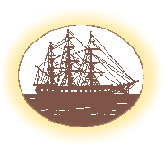
 |
 |

Historical Background on USS Constitution  USS Constitution is the oldest commissioned warship afloat in the world. Carrying a crew of 450 men and over 50 guns, she was launched in 1797 to protect America's freedom on the seas. She was undefeated against the British in the War of 1812 and earned the nickname "Old Ironsides" when a sailor saw a cannon ball bounce off her thick, wooden hull during battle. When she was declared unseaworthy in 1828, she was saved by the American people who rallied for her preservation. After a long career, including capturing a slave ship, circumventing the globe, and serving as a military prison, she is now berthed in Boston and is open to the public. For more information, go to www.allhandsondeck.org, www.ussconstitutionmuseum.org, and www.ussconstitution.navy.mil. USS Constitution is the oldest commissioned warship afloat in the world. Carrying a crew of 450 men and over 50 guns, she was launched in 1797 to protect America's freedom on the seas. She was undefeated against the British in the War of 1812 and earned the nickname "Old Ironsides" when a sailor saw a cannon ball bounce off her thick, wooden hull during battle. When she was declared unseaworthy in 1828, she was saved by the American people who rallied for her preservation. After a long career, including capturing a slave ship, circumventing the globe, and serving as a military prison, she is now berthed in Boston and is open to the public. For more information, go to www.allhandsondeck.org, www.ussconstitutionmuseum.org, and www.ussconstitution.navy.mil. |
||||
| Objectives After completing this lesson, students will be able to: |
||||||||||||
|
| Massachusetts Math Curriculum Frameworks | |||||||||
|
| Materials | ||||||
|
| Procedure | |||
| The difficult part of this lesson is the amount of prerequisite mathematical knowledge. Students must be familiar with right triangle trigonometry, vectors, and finally, the vertical motion mathematics from the first part of the lesson.
A vector is quantity in which both the magnitude and the direction are stated. For example, I could be driving at 35 mph, which is just speed. If I am driving north 35 mph, I now have velocity, which is also a vector. Start with the 1500 m/s problem and move slowly through the beginning. The important aspects of the drawing are shown below.
Simply put, we graph on a horizontal/vertical coordinate system, so we need to convert the slanted vector into a horizontal and vertical component. This is where the right triangle trigonometry comes in handy. To calculate the vertical component of the velocity evaluate: Example:
These values should make sense because the cannon is fired horizontally. The cannon is angled slightly vertically, so the vertical component of velocity is smaller in comparison. The rest of the questions on the worksheet are solved similarly to those of the past lesson.
|
 |
